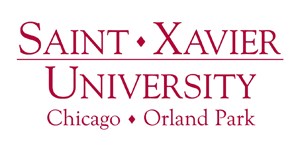GradSTEP Preview: More about the Panels
Over 4,500 colleges and universities grant Associates, Baccalaureate, Master’s and Doctoral degrees. All together, they educate 20.7 million students. Less than 300 colleges and universities (6%) grant more than 20 Ph.D. degrees each year. The diversity of American higher education means that nearly all of our graduate students will find employment in one of the other 94% of colleges and universities. Our six GradSTEP panelists work in departments and colleges that represent these other institution types. In order to understand their workplaces better, we put together this quick guide to institutional types, based on the Carnegie Foundation’s classification system.

|
Megan Streams is an Assistant Professor of Public Administration at Tennessee State University. One of Tennessee’s public universities, TSU is among 101 Historically Black Colleges and Universities (HBCUs) in the U.S. HBCUs are defined as: …any historically black college or university that was established prior to 1964, whose principal mission was, and is, the education of black Americans… HBCUs offer all students, regardless of race, an opportunity to develop their skills and talents. These institutions train young people who go on to serve domestically and internationally in the professions as entrepreneurs and in the public and private sectors. Find out more about HBCUs here. Tennessee State’s enrollment is about 8,800 students. TSU is a Doctoral/Research University in the Carnegie classification system.
Stephen Babalola is a Research Professor in Technology at Alabama A&M University in Normal, Alabama. One of 15 HBCUs in the state of Alabama, the public Alabama A&M awards 17% of all degrees conferred by HBCUs in Alabama. Like SXU and HPU (more on these institutions below), Alabama A&M has a small set of graduate programs. Many of the graduate programs are in professional fields. Unlike HPU, Alabama A&M has a highly residential undergraduate population, and a total enrollment of nearly 5,500 students. While 6% of all institutions are in the HBCU category, they enroll 40% of all students. HBCUs are one type of Minority Serving Institution, a category of colleges and universities that includesAlaska Native-Serving Institutions, American Indian Tribally Controlled Colleges and Universities, Asian American and Native American Pacific Islander-Serving Institutions (AANAPISIs), High Hispanic Enrollment, Hispanic-Serving Institutions (HSIs), Native American-Serving, Nontribal Institutions, Native Hawaiian-Serving Institutions and Predominantly Black Institutions (PBIs). |
 |
Forrest Perry is an Assistant Professor of Philosophy at St. Xavier University (SXU). St. Xavier is a private, non-profit university affiliated with the Catholic Sisters of Mercy. SXU classified as a “Master’s-L” institution with a high undergraduate enrollment and undergraduate instruction in the professions and liberal arts and sciences. SXU’s enrollment is approximately 5,000. |
 |
Tara Davis is an Assistant Professor of Mathematics at Hawaii Pacific University (HPU) in Honolulu. Like SXU, HPU is a private four-year institution also at the “Master’s—L” level. HPU offers some graduate programs to its 8,100 students. The university offers balanced professional and liberal arts degree programs, with a high undergraduate, and high part-time enrollment. HPU’s students are primarily non-residential.
Master’s Institutions like SXU and HPU account for 16% of all institutions, and enrolled 23% of all students in 2009. |
 |
Chad Eggleston is an Assistant Professor of Religion at Huntingdon College in Montgomery, Alabama. Huntingdon is a private, non-profit college affiliated with the United Methodist Church. Huntingdon is a “Baccalaureate College—Diverse Fields” institution—a highly residential college that focuses exclusively on undergraduate education. Huntingdon’s 1,000 students have access to a curriculum balanced with liberal arts and professional fields. Baccalaureate Colleges like Huntingdon represent 17% of all institutions and enroll 7% of all students. |
 |
Heather Whitney is an Assistant Professor of Physics at Wheaton College in Illinois. Wheaton is a private, four-year institution in the “Baccalaureate Colleges—Arts & Sciences” category. Wheaton is widely recognized as an institution that is explicitly Christian in its mission. The college’s nearly 3,000 students mostly live on campus at this selective college known. Wheaton has a few graduate programs and offers one Ph.D. program. |
Other Institutional Types
Associate’s Colleges. Includes institutions where all degrees are at the associate’s level, or where bachelor’s degrees account for less than 10 percent of all undergraduate degrees. Associate’s colleges make up 42% of all institutions and enroll 40% of all students.
Special Focus Institutions. Institutions awarding baccalaureate or higher-level degrees where a high concentration of degrees (above 75%) is in a single field or set of related fields. Institutions in this category include medical schools, engineering schools, business and management schools, art schools, law schools and others. Making up 18% of all institutions, these schools enroll 3% of all students.
Tribal Colleges. Colleges and universities in this category are members of the American Indian Higher Education Consortium. These schools represent .7% of all institutions and enroll .1% of all students.
The Carnegie system has recently changed, with less focus on hierarchy among the categories to a more fine-grained analysis of colleges’ instructional programs, degrees granted, and enrollments. This results in a system that is both more complex and more descriptive than past taxonomies. The entire classification system can be found online.
Join us for GradSTEP on Saturday for workshops and discussions on teaching, learning, and professional development issues across the disciplines. All Vanderbilt graduate and professional students, as well as post-doctoral fellows, are invited to attend. Find out more on the CFT website.


Leave a Response